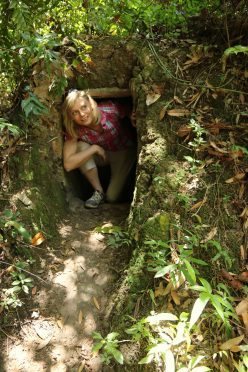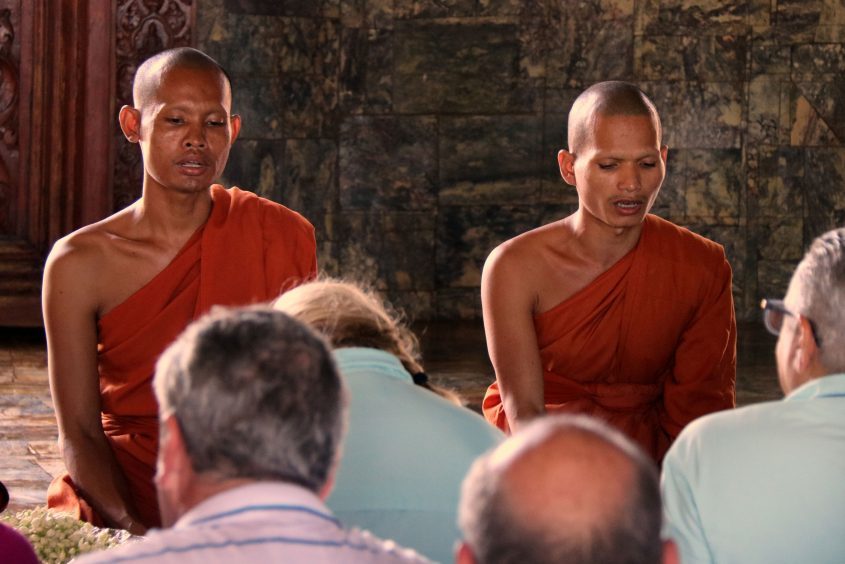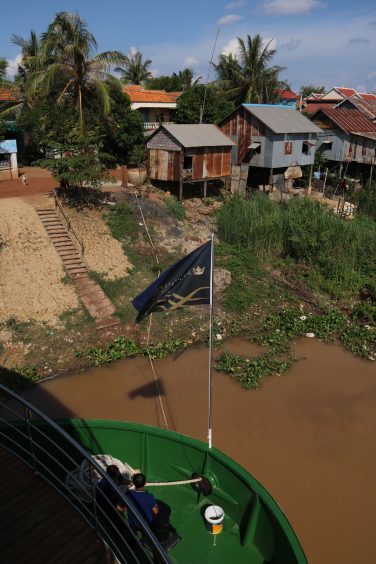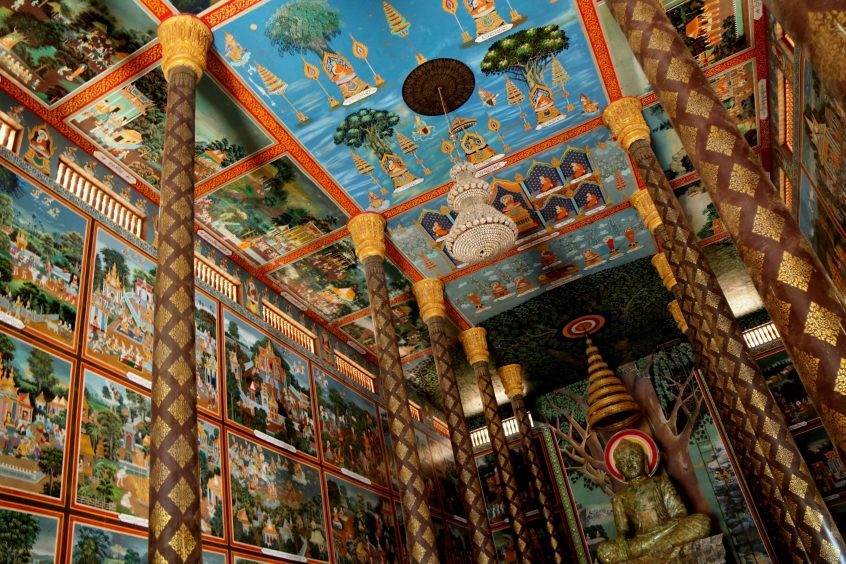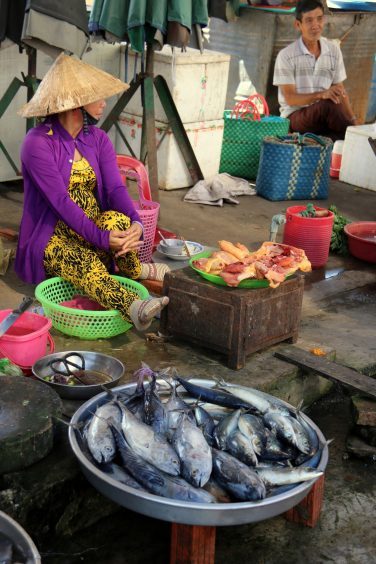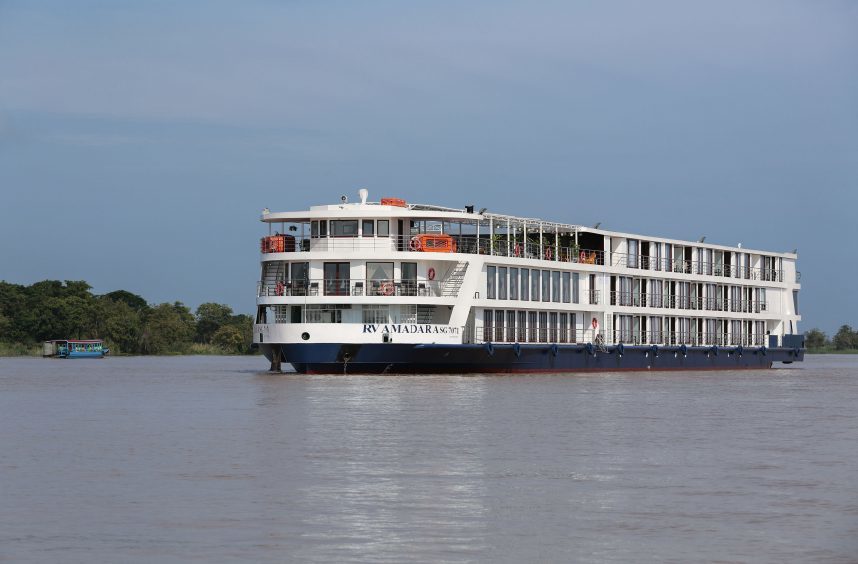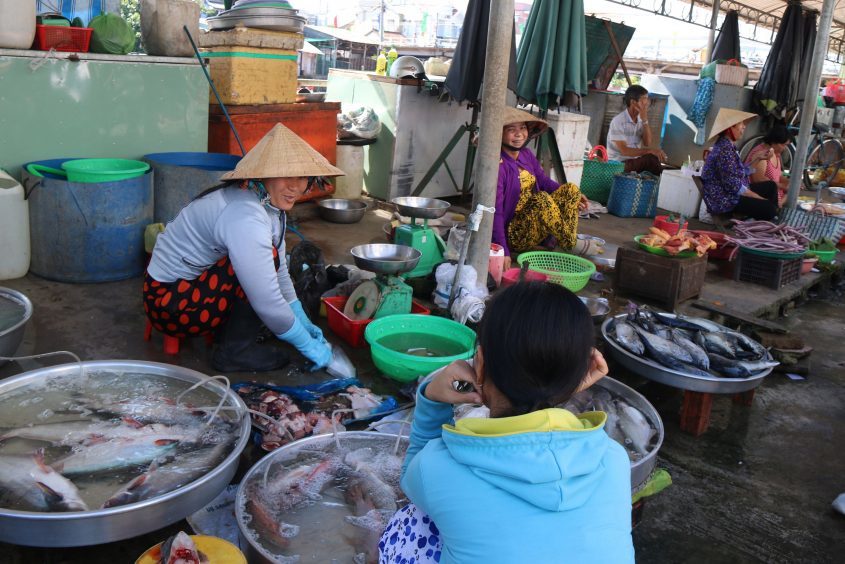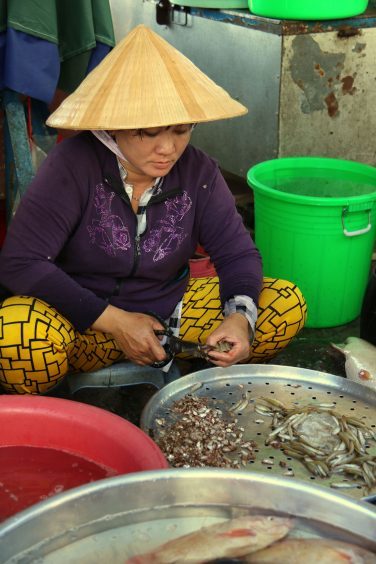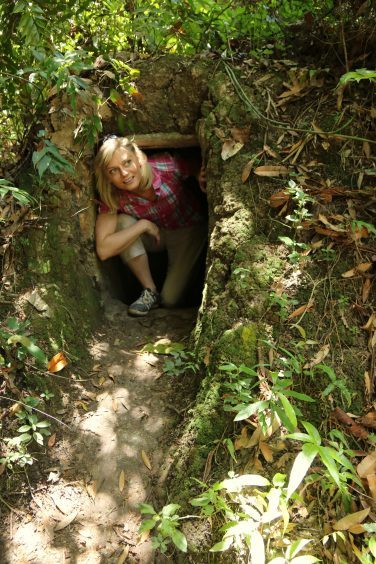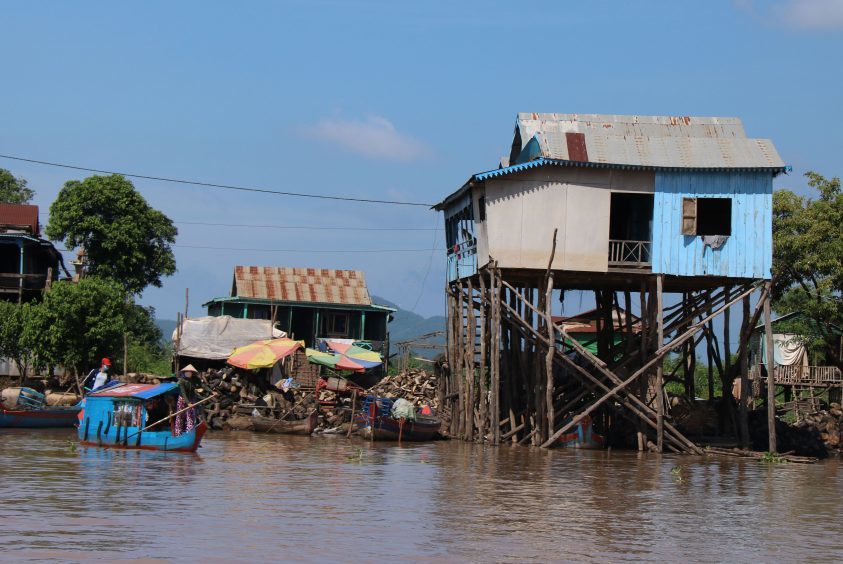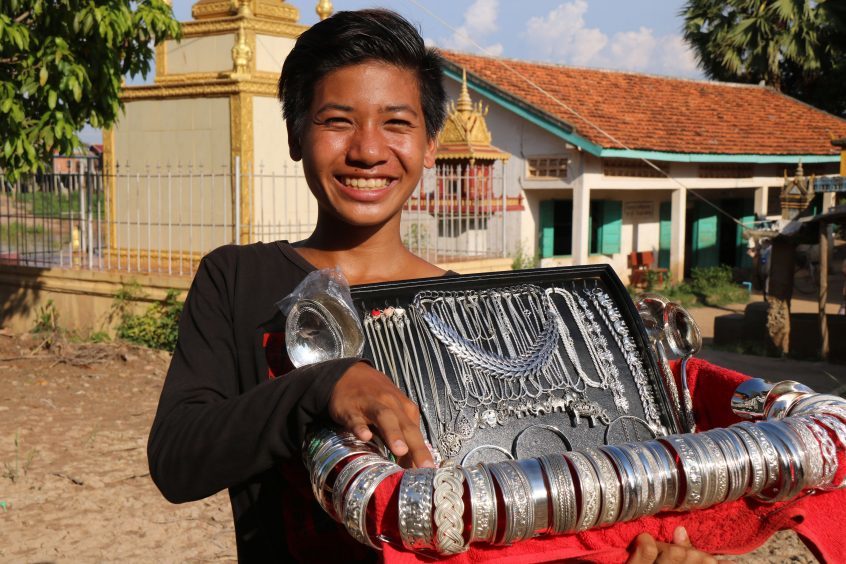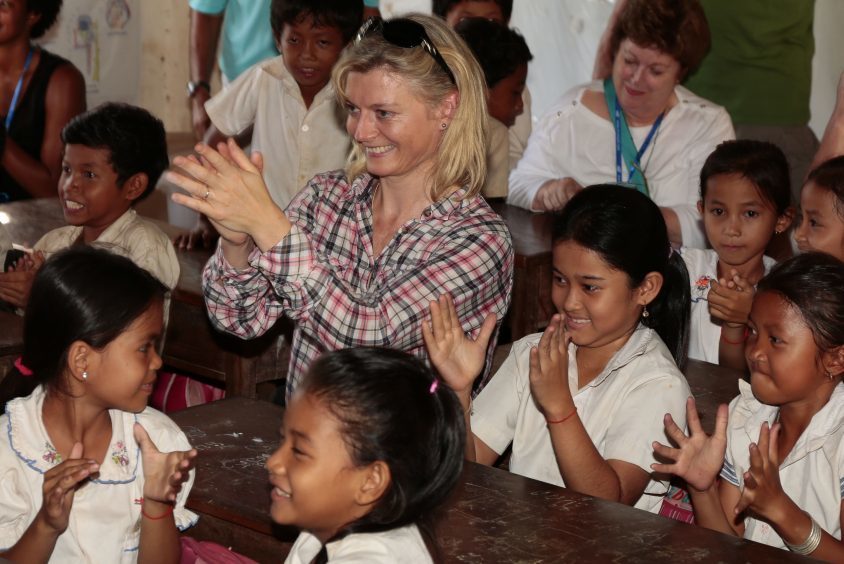Ever wondered what silk worms taste like? Karen Bowerman broadens her palette on a cruise along the Mekong, through Vietnam and Cambodia
My guide, Zdee, shakes a tiny ball close to my ear.
“Hear that rattle?” he says, with excitement. “She’s still alive!”
’She’ is a silk worm.
The industrious caterpillar has been weaving her cocoon for the past three days. Now it’s time to transform into a pupa and emerge as a moth. Or at least, that’s what would happen in the natural order of things.
But here in Vietnam, where nothing’s wasted, the silk will become cloth and our worm, a snack.
“So what does silk worm taste like?” I ask, half-expecting that ubiquitous “chicken” reply.
“Silk worm tastes like silk worm,” Zdee says, matter of factly.
I guess I should have expected that.
We’re at a weaving workshop in Tan Chau in the southwest of the country, where in sweltering heat and a humidity that leaves you soaked in seconds, men work calmly at 150-year-old looms that clatter deafeningly around us.
Zdee suggests we go on to visit a rattan mat workshop nearby. Outside, two young girls present me with a posy of grasses they’ve made, expecting nothing in return.
It’s another delightful encounter, typical of my seven-night cruise along the Mekong with AmaWaterways.
For the past five days, I’ve been sailing on the AmaDara, the company’s new riverboat. It has 62 suites (all with balconies) and 50 crew all eager to please. But it’s the guides that shine, as they share their lives and introduce their countries with candidness, grace and pride.
The cruise takes us from Prek Thnot Dam in Cambodia to My Tho in Vietnam, although the first day is given over to a coach transfer from Siem Reap. We break the trip at a local market, where the brave try crunchy crickets and a child thrusts a live tarantula onto my chest.
On day two, we cruise down Tonle Sap, one of the Mekong’s tributaries, and moor at the small Cambodian village of Koh Chen.
The afternoon sees me squashed behind a desk among school children, devoting myself, in song, to Old McDonald.
Lessons over, I bump into the youngsters again and teach them a hand-clapping game. They just about master it as the AmaDara disembarks. I wave goodbye from the sun deck as two of them show off to their friends.
As with most of Southeast Asia, Cambodia is a Buddhist country. At Oudong, 20 miles north of the capital Phnom Penh, we spend the morning at the Vipassana Dhura monastery.
We gather, cross-legged, before saffron-clad monks in the temple. Sunlight streams through the door. The monks chant quietly, praying that we might be blessed with happiness and long life. Then they shower us with fragrant jasmine flowers, which fall silently at our feet.
My last day in Cambodia is a reminder of its horrific past. In the Seventies, communist soldiers of the Khmer Rouge forcibly evacuated cities, marching everyone into the country. It was part of political leader Pol Pot’s dream for an agrarian utopia. The educated were executed and arts, literacy and religion abolished.
In Phnom Penh, Tuol Svay Prey High School was turned into the largest prison in the country: S21. Classrooms became interrogation centres; the playground a torture zone.
In the grounds, I meet Bou Meng, a former prisoner who survived because he was able to mend a typewriter needed to document false confessions.
He shows me a book of his life story. I ask him how he manages to return to a place where he suffered so much.
“If I’m here, I can tell the world what happened,” he says, “and explain the importance of peace.”
Many of his friends were executed at the Killing Fields on the outskirts of the city, bludgeoned to death with sticks so as not to waste money on bullets. Beneath shady trees, dips in the ground indicate mass graves. The visit is harrowing, but you can’t ignore the past.
Strangely, I find picking my way through the marshy Xeo Quyt Forest in neighbouring Vietnam, even more disturbing. It was the secret base of the Viet Cong during the Vietnam War.
Creepers hang everywhere, like giant netting. Narrow channels, choked with water hyacinths, snake through jungle, past bunkers and entrances to tunnels, which open like trap doors.
For years, Viet Cong commanders plotted guerrilla warfare here, just a mile from a US military base. They laid booby traps and mines, spoke in whispers and met only at night. It’s as if the jungle has yet to absorb their evil.
Back on the AmaDara, there’s plenty to lighten our mood: cocktail parties, cooking lessons and ample choice for dinner. I try Cambodian amok (fish curry), Vietnamese Ca Kho (caramelised catfish) and Phnom Penh pumpkin custard with sticky rice.
We cruise towards the Mekong Delta. The river fills with ferries, sand dredgers and sampans (Chinese-style flat bottomed boats). Soon it will split into nine channels, giving rise to its Vietnamese name, Cuu Long, the river of Nine Dragons.
The watery landscape has fish farms, and bright green paddy fields which produce 40% of the country’s rice. The crop’s so precious that farmers are buried among it, in marble tombs. Homes, on stilts, soar high above the water – but only for now. Seasonal tides are huge and flow up to 180 miles inland.
At Sa Dec, we visit a Vietnamese market where women in conical hats crouch among onions, lychees and snails. Silvery basa fish splash in bowls. A girl, wearing print pyjamas, methodically snips off the heads of riel (tiny river fish). Her customer waits patiently, sitting on a scooter at her side.
The local delicacy is rats, caught from the region’s rice fields. They’re six US dollars a kilo – expensive, considering a bed in a hostel is seven. But Zdee says they’re “popular at parties” and are particularly nice roasted.
Our conversation returns to food, but this time, I’m one step ahead.
“So rat tastes like rat,” I announce cheekily.
Zdee looks at me, surprised. “Surely you haven’t tried it?”
I shake my head and smile.
“Well, rat tastes a little like rabbit!” he adds. “Just to give you some idea.”
TRAVEL FACTS
Karen Bowerman was a guest of AmaWaterways (www.amawaterways.co.uk) who offers an 11-night Mekong Cruise & Stay, from £2,229pp (was £3,029pp), including two nights pre-cruise in Siem Reap and seven nights cruising the Mekong on the AmaDara. Excursions and airport transfers included.
